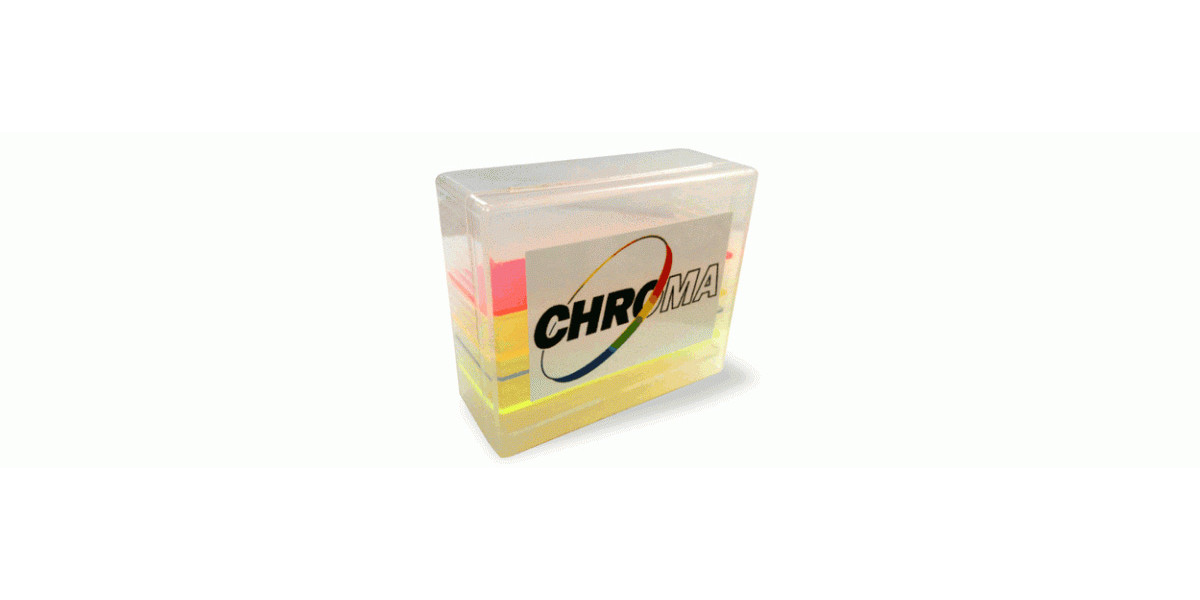
Auto-Fluorescent Slides
Chroma’s Auto-Fluorescent slides are made with a mixture of different molecules in an extruded polymer so that they are highly auto-fluorescent. They were designed to check light throughput for standard epi-fluorescent systems such as widefield and confocal microscopes, plate readers, flow cytometers, and 2-photon laser microscopes. In fact, these will work on any device that uses a stage that will hold the slide, and any filter ‘sets’ for imaging fluorescence.
What are the general uses for the slides?
– The primary function is as a “positive control” to check that light is getting through both illumination and detection portions of the system and are of the ‘correct’ general wavelengths.
– Evaluating the beampath by using the same light source (and power), with the same filter set and the same objective lens, to a camera/detector with the same exposure. The average grayscale of the image (from the same slide) should be very similar to the value from last week or last month. This same process can be used for semi-calibration of intensity/exposure/etc., or to determine if the illumination intensity has changed (typically from an aging light source).
– Checking and correcting the flatness of field to cameras by focusing into the slide and acquiring an image within the dynamic range of the detector. If illumination forms an intensity gradient or shape across the visible field, there is likely to be some mis-alignment of the source that would need to be corrected.
– Semi-calibration/control for Fluorescence Life-Time imaging systems (most users prefer the orange slide, but others may work too).
These slides are inexpensive polymers that contain a homogeneous mixture of organic molecules. They will photo-bleach with continuous exposures over time, especially with UV light and/or high-powered laser excitations.
They are highly fluorescent at a variety of wavelengths, but there are some biases depending on the wavelengths (and power) of the excitation light. They are designed to act as a reference standard for microscope performance. In each case, they are optimized for specific performance parameters of the instrument, including resolution, cube performance or spectral separation, and camera sensitivity.
The following are suggestions for each colored slide:
– Blue - best when used with UV/Violet excitation light and Blue, Green or Red emission optics.
– Green - may be best when used with Blue excitation light and Green or Red emission optics. Also works with UV/Violet excitation.
– Yellow - best with Green excitation light and Orange/Red emission optics. Also works with UV/Violet excitation.
– Orange - generally referenced as the best to use at All wavelengths, but also Yellow/Orange excitation light and Red/NIR emission optics. This slide is also the thickest slide and therefore best with most laser systems.
– Clear Drop-Slide - for use with an 18mm square coverslip and your own solution of any fluorochrome that you choose to use.
Regardless of whether you use these slides on a widefield or confocal microscope, you should be able to image all 4 colors with minimal bleed-through between channels if the microscope is properly set up.
NOTE: Because we do not alter or dictate the materials used in their construction, we are unable to provide any support in their use. We cannot make any guarantees about the substances these slides are manufactured with, nor what their emission properties are.
If you have any questions about our filters please contact Customer Service. Additionally, contact our Sales Team will help you customize filters or recommend a catalog set to work with your application.










